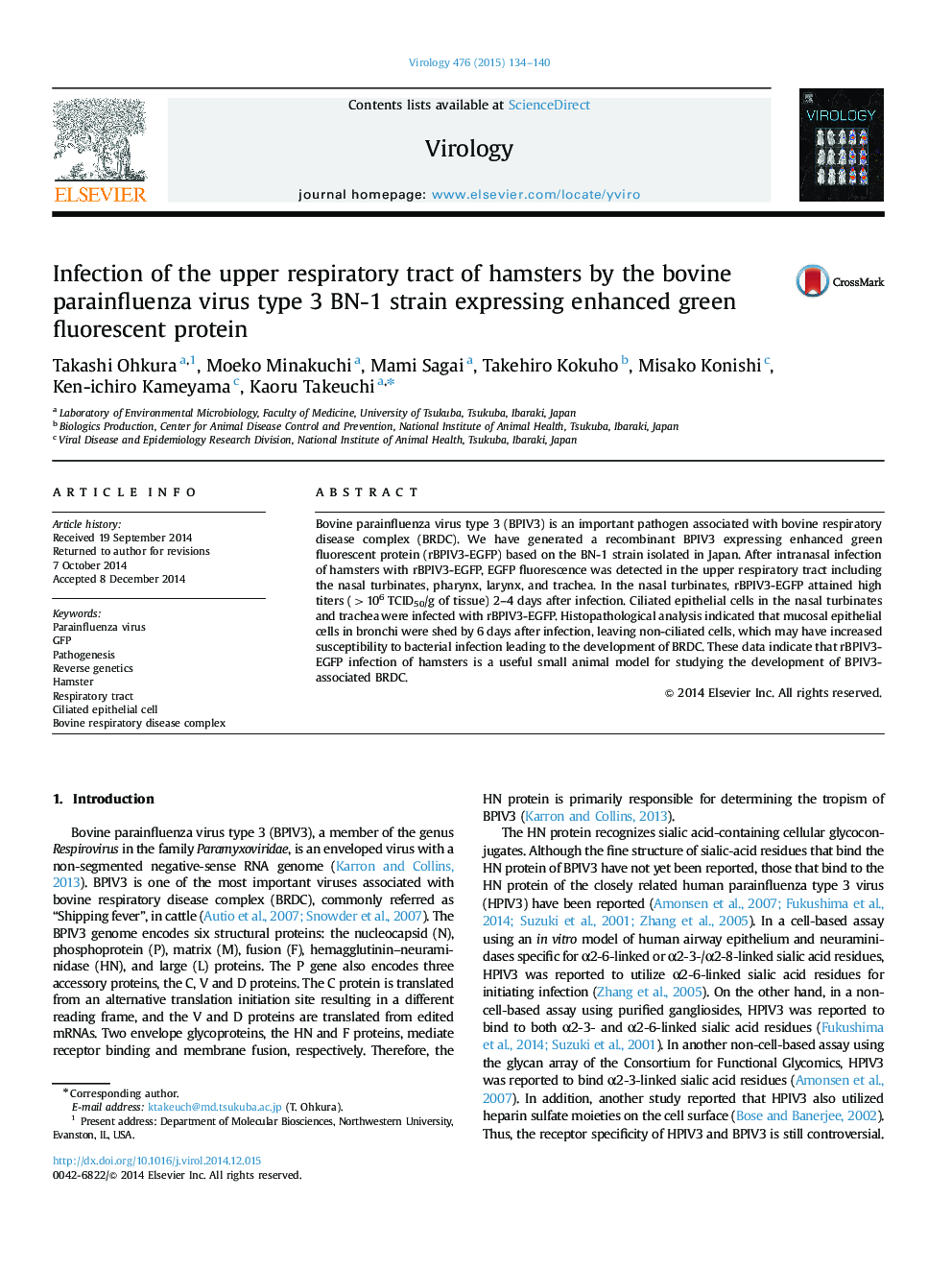| Article ID | Journal | Published Year | Pages | File Type |
|---|---|---|---|---|
| 6139640 | Virology | 2015 | 7 Pages |
Abstract
Bovine parainfluenza virus type 3 (BPIV3) is an important pathogen associated with bovine respiratory disease complex (BRDC). We have generated a recombinant BPIV3 expressing enhanced green fluorescent protein (rBPIV3-EGFP) based on the BN-1 strain isolated in Japan. After intranasal infection of hamsters with rBPIV3-EGFP, EGFP fluorescence was detected in the upper respiratory tract including the nasal turbinates, pharynx, larynx, and trachea. In the nasal turbinates, rBPIV3-EGFP attained high titers (>106 TCID50/g of tissue) 2-4 days after infection. Ciliated epithelial cells in the nasal turbinates and trachea were infected with rBPIV3-EGFP. Histopathological analysis indicated that mucosal epithelial cells in bronchi were shed by 6 days after infection, leaving non-ciliated cells, which may have increased susceptibility to bacterial infection leading to the development of BRDC. These data indicate that rBPIV3-EGFP infection of hamsters is a useful small animal model for studying the development of BPIV3-associated BRDC.
Keywords
Related Topics
Life Sciences
Immunology and Microbiology
Virology
Authors
Takashi Ohkura, Moeko Minakuchi, Mami Sagai, Takehiro Kokuho, Misako Konishi, Ken-ichiro Kameyama, Kaoru Takeuchi,
